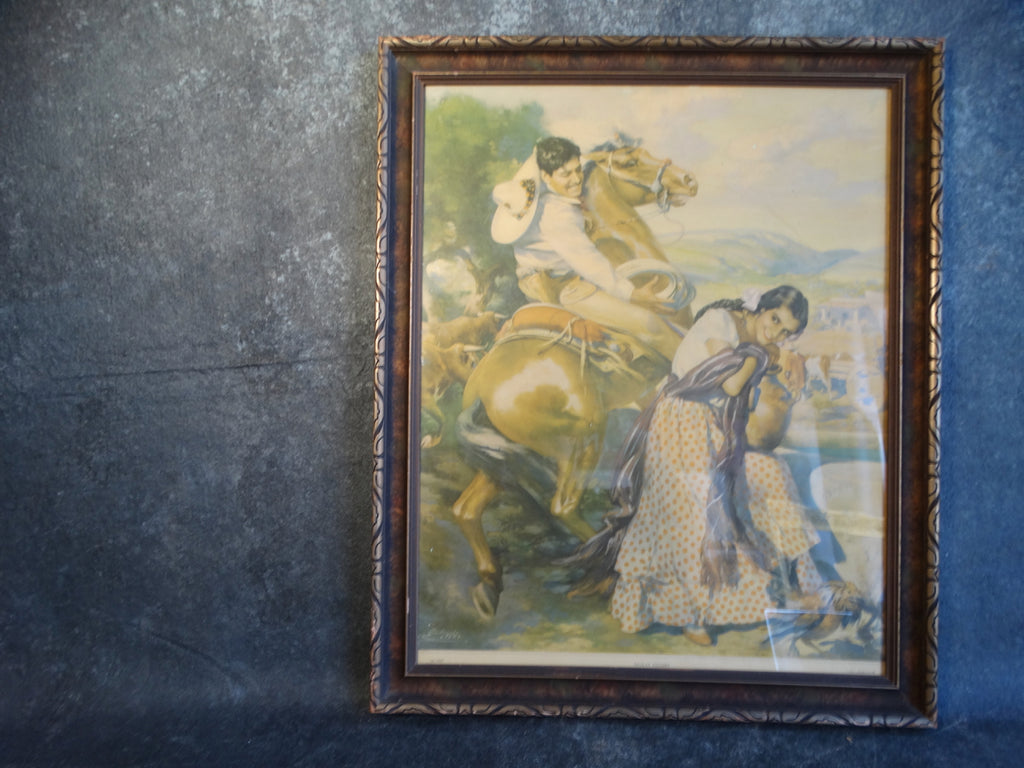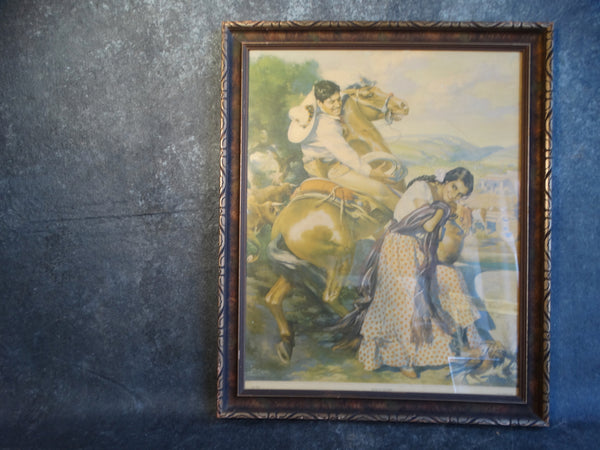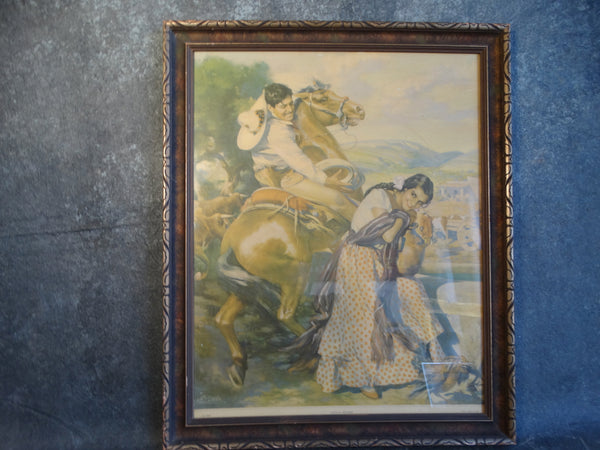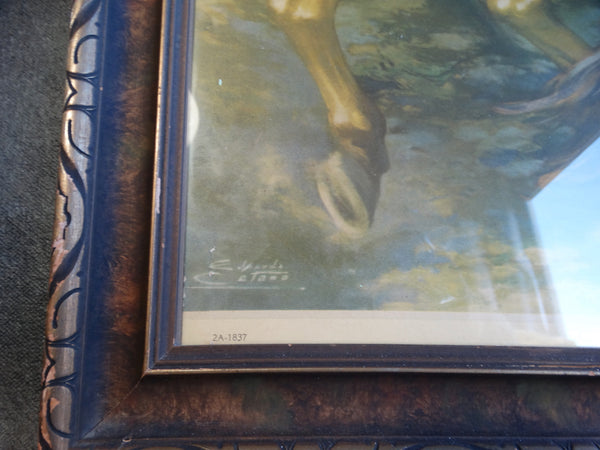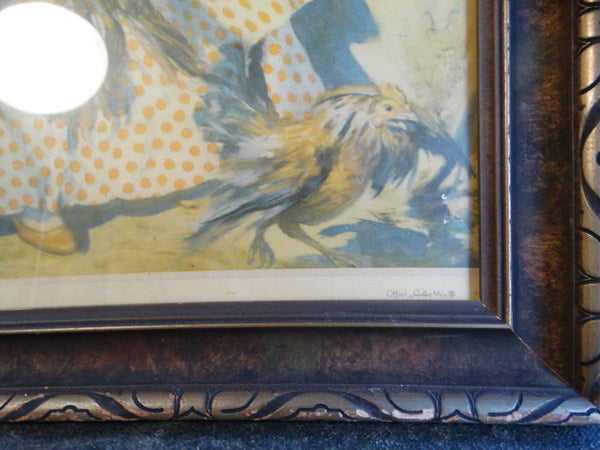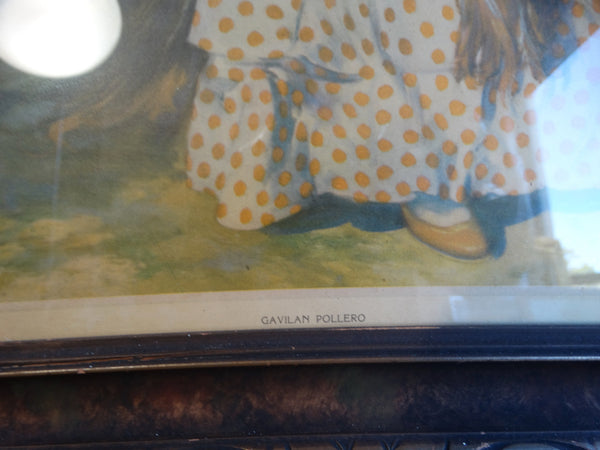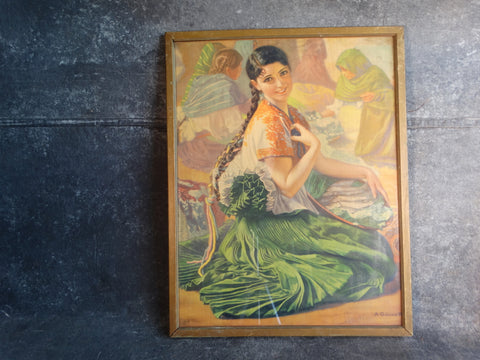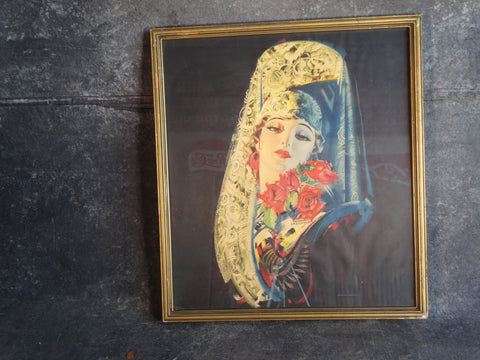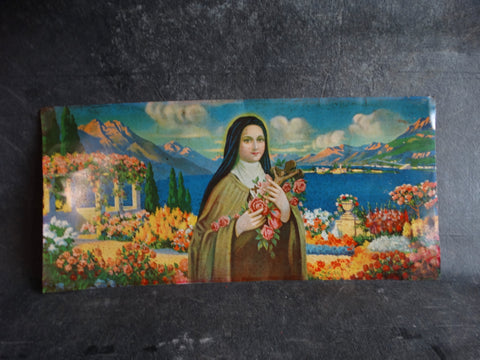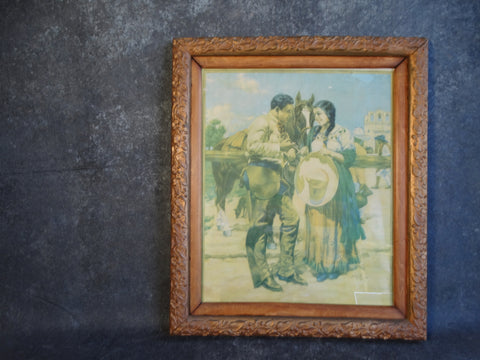Mexican Calendar Art Litho - Eduardo Cataño - El Gavilan Pollero: a Vaquero Courting a Señorita - AP1242
A classic image from one of the greats of Mexican popular art. These images hung in countless Mexican homes over the years. Some fading as shown.
Measures 15 3/4" x 19 3/4", frame is 18 3/4" x 22 3/4"
Eduardo Cataño Wilhelmy (Santiago Ixcuintla, Nayarit, Mexico, 1910–Mexico City, Mexico, 1964) was a Mexican painter who worked for the Galas de México printing establishment, immortalizing the faces of advertising models.
Cataño was the son of Jesús Cataño Flores, a photographer from Tepic who drew as a hobby, and Flora Wilhelmy del Real, the daughter of a German sailor who had settled in Sinaloa. Cataño demonstrated a fondness and talent for painting at an early age. He moved as a young man to Mexico City, where he produced vignettes, covers, and caricatures. He studied visual arts at the Academy of San Carlos. With his almost Victorian upbringing, he cut a gentlemanly figure and was known as a great conversationalist, a connoisseur of art history, a poet, and a lover of Mexican colonial architecture. He married the well-known writer and activist Margarita Michelena, who bore him two children: Andrea and Jesús. In his early years at Galas de México, Cataño designed the label for Corona beer, which is still in use. For his paintings, he did preliminary research and worked from photographs that he took himself in Mexican villages: he portrayed ideal models of men and women with a romantic beauty very much in the popular taste.
The introduction to Museo Soumaya's Mexican Calendars catalogue defines the colorful aesthetics of Mexican calendar art as a "singular combination of creativity and commercial efficacy". And furthermore states that: "Both affective and effective, the final product was multiplied in works that have persisted in the collective imagination of several generations of Mexicans, helping to define their notions of national identity, beauty, folklore, cinema, leisure, religion, esthetic taste, fashion, tourist resorts, and childhood."
The Galas de México calendars that were a mainstay in countless Mexican homes for decades positioned Cataño as one of the greatest artists in the genre of pin-up girls for calendars. Although the printing establishment founded by Santiago Galas had a studio where the house artists could work, Cataño enjoyed the privilege of working at home, where he created his ideally beautiful figures, often modeled after magazine photographs. It was his use of color that especially marked his vast production.

